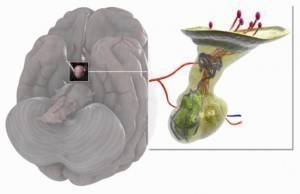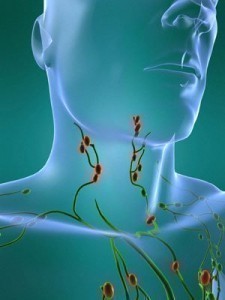Cushing’s Disease
Definition and Causes
Cushing’s disease refers to the manifestation of Cushing’s syndrome as a result of a pituitary gland tumour or tumours. The pituitary gland is located at the lower portion of the brain and controls cortisol production within the body. The small tumours may cause the adrenal glands to produce too much cortisol resulting in significant changes to the body. The tumours themselves are not typically malignant or cancerous however if they enlarge they may cause vision impairment.
Symptoms
- Rapid weight gain (central obesity) that is localized in the abdomen and face area but that does not extend much to the limbs (hands and feet).
- The development of fat pads over the collar bone and on the back of the neck (buffalo hump). This is also known as lipodystrophy which is a condition that causes the displacement of fat (adipose tissue) in different areas of the body.
- The development of a round face or moon face from the increase in fat.
- Excessive sweating
- Dilation of the capillaries (telangiectasia)
- Thining of the skin which leaves the skin susceptible to dryness and bruising especially of the hands.
- Thining of the mucous membranes
- The presence of purple and red striae (stretch marks) on the arms, trunk, breasts, buttocks or legs. This is as a result of the weight gain that causes the already significantly thinned skin to haemorrhage.
- Male-pattern facial hair growth may also develop known as hirsutism
- Hypercalcemia or the elevation of calcium levels may occur which may result in skin necrosis or death of skin cells.
- It may also cause sore and aching joints that may be felt in the back, hip and shoulders.
- The endocrine system can also be affected and may cause:

- Insomnia or a general inablitiy to sleep.
- Reduced libido or sexual desire.
- Impotence
- Infertility
Psychological disturbances may sometimes materialize which may include euphoria, psychosis, anxiety and depression.
There are some disease that can occur as a result of Cushing’s disease
- Hypertension or high blood pressure
- Diabetes Mellitus (which may occur in association with the resultant insulin resistance that leads to hyperglycemnia (high blood sugar) then probable diabtes)
- Heart disease may occur that may be potentially life-threatening
- Osteoporosis may eventually develop because the elevated level of cortisol will stimulate a stress response from the body causing the body to lessen the maintenance of the bone and other tissue and expend its effort on the false stress response.
Treatment
The typical treatment will include the removal of the tumour from the pituitary gland. The success rate is generally very good with this type of surgery. To decrease the chance that the tumour will return radiation therapy may be performed. A medication that is similar to cortisone will be administered for some months after the removal of the tumour or the tumours.
If the patient cannot endure surgery an alternative of taking certain drugs may be recommended most notably ketoconazole and metyrapone. However they are not always very effective and in most cases will not have the same benefits as surgery.





